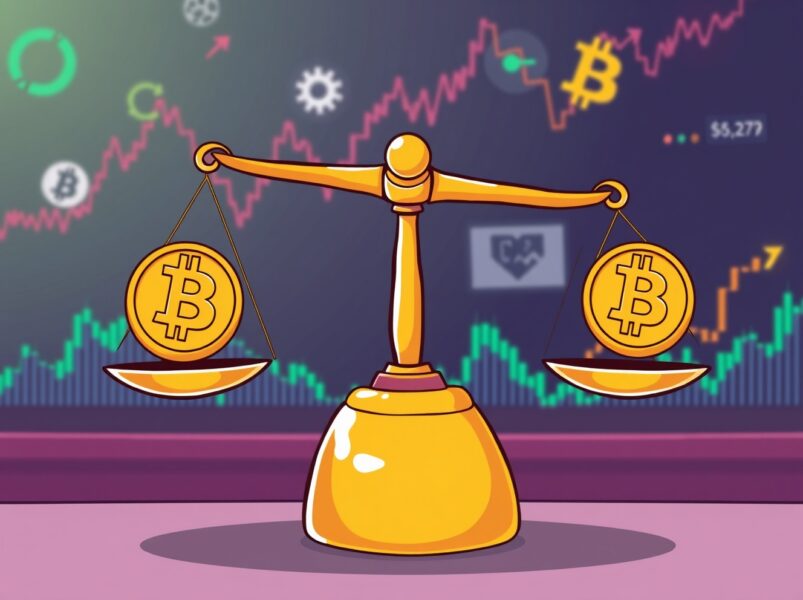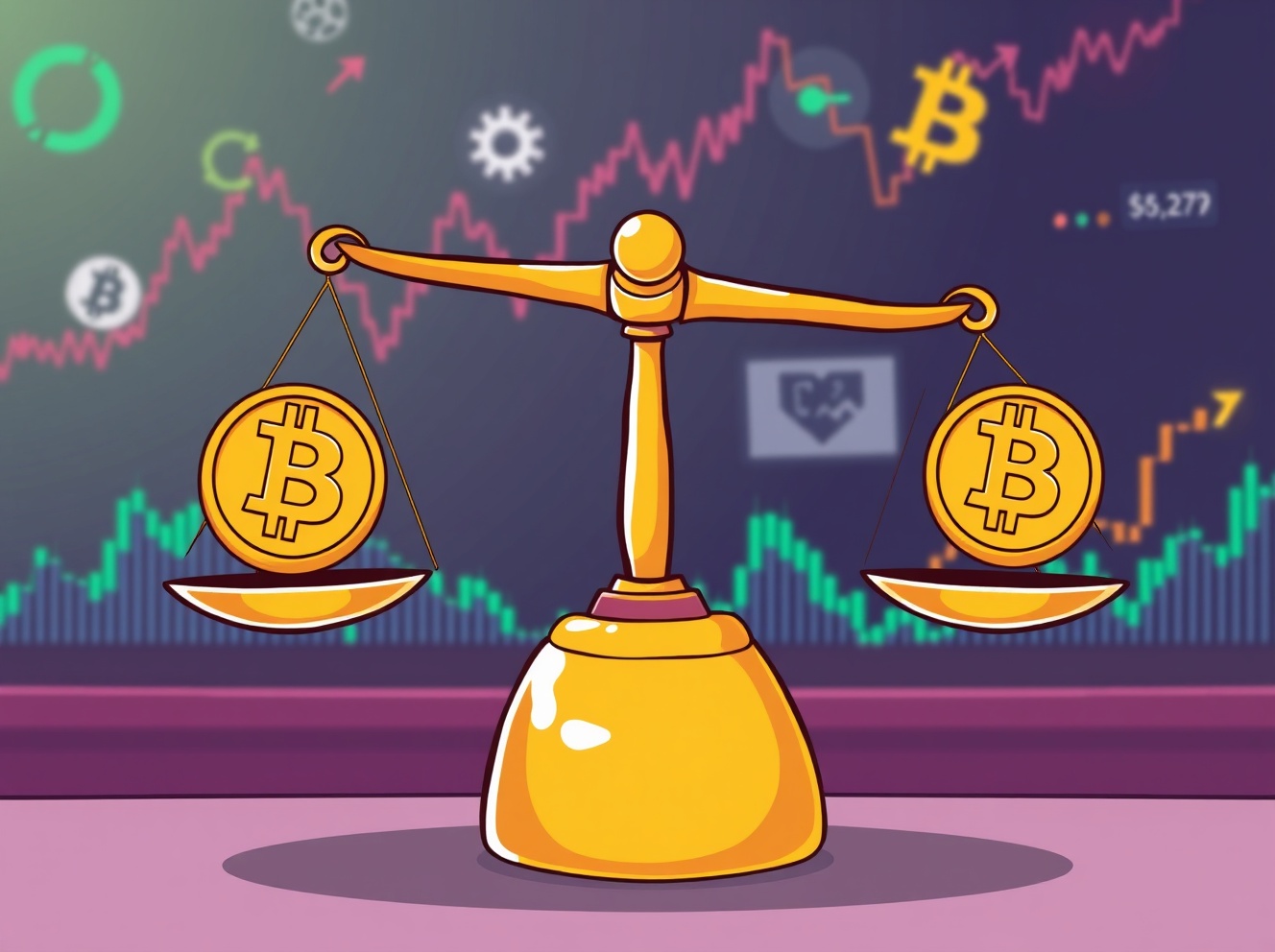Unveiling Crucial BTC Perpetual Futures Ratios: A 24-Hour Market Sentiment Snapshot
0
0

BitcoinWorld

Unveiling Crucial BTC Perpetual Futures Ratios: A 24-Hour Market Sentiment Snapshot
Understanding market sentiment is a cornerstone of successful cryptocurrency trading. One of the most insightful metrics for gauging this sentiment is the long/short ratio for BTC perpetual futures. This data offers a snapshot of how traders are positioning themselves, indicating whether the collective mood leans bullish (long) or bearish (short) on Bitcoin’s immediate future.
What Do BTC Perpetual Futures Ratios Tell Us?
When we talk about BTC perpetual futures long/short ratios, we are essentially looking at the proportion of open positions betting on a price increase versus those betting on a price decrease. A ‘long’ position anticipates Bitcoin’s price will rise, while a ‘short’ position expects it to fall.
These ratios provide a valuable pulse check on the market’s current psychological state. They highlight whether optimism or pessimism is dominating the trading landscape at any given moment.
Over the last 24 hours, the BTC perpetual futures long/short position ratios on the world’s top three crypto futures exchanges by open interest presented a fascinating picture:
- Overall: Long 49.87% / Short 50.13%
- Binance: Long 49.63% / Short 50.37%
- Bybit: Long 50.41% / Short 49.59%
- Gate.io: Long 49.05% / Short 50.95%
Decoding the Market: What’s Behind These Numbers for BTC Perpetual Futures?
The overall ratio, showing a slight majority of short positions at 50.13%, suggests a marginally bearish or cautious sentiment across these major exchanges. This indicates that slightly more traders are anticipating a downward movement for Bitcoin’s price.
However, diving deeper into individual exchanges reveals some interesting nuances. Binance and Gate.io both show a clear leaning towards short positions, with Gate.io exhibiting the strongest bearish bias among the three. Conversely, Bybit stands out with a majority of long positions, suggesting a comparatively more bullish outlook from its user base.
This divergence could stem from various factors, including regional trading preferences, platform-specific liquidity, or even differing trader demographics. It underscores the importance of not relying on a single data point.
How Can Traders Leverage BTC Perpetual Futures Data?
While these long/short ratios are a powerful indicator, they are rarely a standalone signal for making trading decisions. Savvy traders often use this data as a confluence point with other technical and fundamental analysis tools.
For instance, if Bitcoin’s price is at a key resistance level and the long/short ratio shows an increasing number of short positions, it could reinforce a bearish outlook. Conversely, a strong support level coupled with a shift towards more long positions might signal a potential rebound.
Understanding the collective sentiment through BTC perpetual futures ratios can help you anticipate potential market movements. It can also act as a contrarian indicator; if sentiment is overwhelmingly one-sided, a reversal might be on the horizon as the market tends to surprise the majority.
In conclusion, the 24-hour snapshot of BTC perpetual futures long/short ratios offers a crucial glimpse into current market sentiment. While the overall picture suggests a cautious or slightly bearish stance, individual exchange data highlights diverse trader expectations. For any trader, incorporating these insights into a broader analytical framework can significantly enhance decision-making and risk management in the volatile crypto market.
Frequently Asked Questions (FAQs)
What are BTC perpetual futures?
BTC perpetual futures are a type of derivative contract that allows traders to speculate on the future price of Bitcoin without an expiration date. Unlike traditional futures, they ‘perpetually’ roll over, making them popular for continuous trading.
Why are long/short ratios important for BTC perpetual futures?
Long/short ratios are important because they provide a direct measure of market sentiment. They show the proportion of traders betting on price increases (long) versus those betting on price decreases (short), offering insights into collective trader positioning.
Does a high short ratio always mean Bitcoin’s price will fall?
Not necessarily. While a high short ratio indicates bearish sentiment, it’s not a definitive prediction. Sometimes, an extremely one-sided sentiment can precede a ‘short squeeze’ or a ‘long squeeze,’ leading to a price reversal against the majority’s expectations.
How frequently are these BTC perpetual futures ratios updated?
These ratios are typically updated in real-time or very frequently by data providers and exchanges, offering continuous insights into the evolving market sentiment.
Which exchanges provide this long/short ratio data?
Many major cryptocurrency futures exchanges, including Binance, Bybit, and Gate.io, provide data on their respective long/short ratios. Aggregators also compile this data from multiple platforms.
Did you find this analysis helpful? Share this article with your fellow traders and crypto enthusiasts on social media to spread these crucial market insights!
To learn more about the latest crypto market trends, explore our article on key developments shaping Bitcoin price action.
This post Unveiling Crucial BTC Perpetual Futures Ratios: A 24-Hour Market Sentiment Snapshot first appeared on BitcoinWorld.
0
0
 Manage all your crypto, NFT and DeFi from one place
Manage all your crypto, NFT and DeFi from one placeSecurely connect the portfolio you’re using to start.






